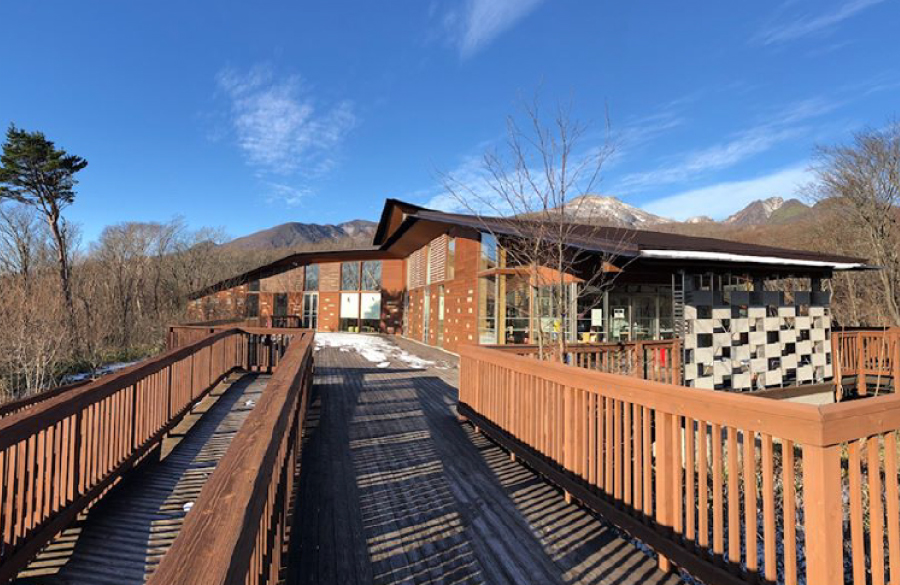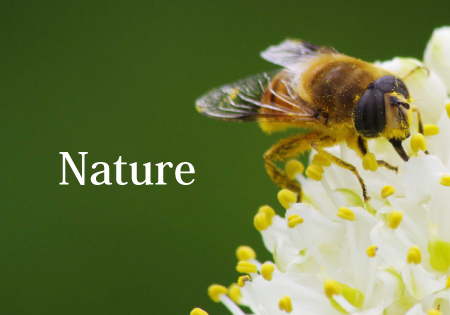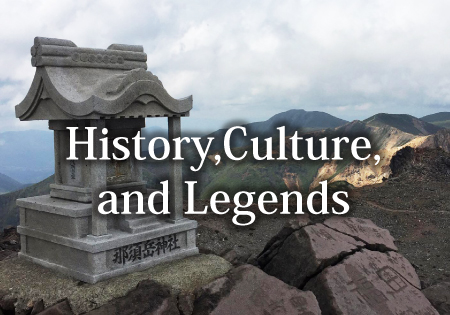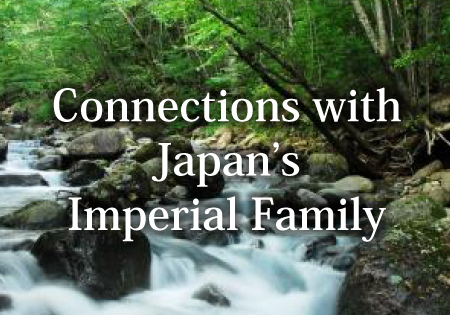The Imperial Family’s Ties to the Nasu Area
The Nasu Imperial Villa was built in 1926 on land that had been maintained as an
imperial estate since 1890. A few years earlier in 1923, Emperor Shōwa (1901–1989),
then crown prince, made his first visit to the Nasu hot springs and had lunch at an inn
overlooking the mountains and highlands. He was so taken by the view that he
decided to build a retreat. On the villa’s completion, he came to stay for a month, and
during this time he made his first climb up Mt. Chausu (1,915 m).
Successive emperors have continued to use the villa as a summer retreat. Although the
residence has never been open to visitors, the presence of an imperial residence in the
area boosted its status as a summer resort. Beginning in the 1960s, Nasu’s popularity
began to skyrocket, and since the 1980s the area has seen around 5 million visitors
each year. In 2008, at the request of Emperor Akihito (r. 1989–2019), around 560
hectares of the 1,225-hectare imperial estate was opened to the public and placed
within the jurisdiction of Nikko National Park.
Recent emperors have pursued a strong scientific interest in nature. Emperor Shōwa
researched slime molds (amoeboid protists, similar to fungi), marine invertebrates,
and plants, and he published four volumes on the plants of Nasu. His collection of
60,000 specimens is held by the National Museum of Nature and Science in Tokyo. In
1962, he began releasing green pheasants—hatched as part of Tochigi Prefecture’s
wild bird breeding project—in the mountains of Nasu. This practice was continued by
Emperor Akihito, whose scientific interest lies in the classification of fish in the goby
family. Current Emperor Naruhito (b. 1960), who often goes climbing in the Nasu
mountains, is himself devoted to water policy and conservation.
Nasu Imperial Villa
The generations of Emperors that have succeeded Shōwa have also enjoyed summering with their families at the Imperial Villa. Their Majesties the Emperor Emeritus and Empress Emerita occasionally enjoy strolling together around the grounds of the villa during their stay.
The Imperial family of the current Emperor Reiwa also uses the Nasu Imperial Palace as a summer retreat, sometimes in the company of Their Imperial Highnesses Crown Prince and Crown Princess Akishino and their family.
Staying at the villa offers them a chance to spend important time together as a family, enjoying walking, mountain climbing, and other leisure activities.

Nasu Heisei-no-Mori Forest
In response to the Emperor Emeritus’s suggestion to keep an accurate record of the natural flora and fauna of the villa’s lush forest environs and gain an understanding of its subsequent changes, the Tochigi Prefectural Museum conducted a five-year survey of the area beginning in 1997.
The findings of the survey confirmed that the area preserves a rich and diverse natural environment that, in addition to wild stands of beech and other trees, also provides a habitat for a large variety of other plant and animal species, some of which are quite rare.
Also, in response to the Emperor Emeritus’s vision that, while maintaining this rich natural heritage, the villa environs should also be used as a space for citizens to interact directly with nature, approximately 560 ha –almost half of the estate – was transferred from the Imperial Household Agency to the Ministry of the Environment on the occasion of the twentieth year of His Majesty the Emperor Emeritus’s reign.
Subsequently, the construction of a Field Center and boardwalks was carried out in conjunction with ongoing monitoring and surveys of the natural environment, and Nikko National Park was opened to the public as "Nasu Heisei-no-Mori Forest" on May 22, 2011.

An Interest in Nature
-
Full of education and excitement! Visit a forest associated with the Imperial Family.
Kokyo (Imperial Palace) Gaien National Garden , Shinjuku Gyoen National Garden , Kyoto Gyoen National Garden , Nasu Heisei-no-mori Forest , Nasukogen Visitor Center


 Highlighting the beautiful seasonal charms of the Nasu Mountain Range, with suggestions on activities to enjoy in the area
Highlighting the beautiful seasonal charms of the Nasu Mountain Range, with suggestions on activities to enjoy in the area
 Featuring the local culture and hot springs with over 1,400 years of history, as well as the legend of the Sesshō-seki, or “Killing Stone”
Featuring the local culture and hot springs with over 1,400 years of history, as well as the legend of the Sesshō-seki, or “Killing Stone”
 Nasukogen enjoys a deep relationship with the Imperial Family, and is home to an Imperial Villa that serves as their summer retreat.
Nasukogen enjoys a deep relationship with the Imperial Family, and is home to an Imperial Villa that serves as their summer retreat.